1,575 days, 2,408 entries ...
Newsticker, link list, time machine: HOLO.mg/stream logs emerging trajectories in art, science, technology, and culture––every day
Angela Washko’s solo exhibition “You Are: Mother, Player” opens at Public Works Administration, a digital art gallery on New York’s Time Square. The show centres on Washko’s narrative videogame, Mother, Player (2022), in which the American artist and educator shares her experiences of pregnancy and motherhood during the pandemic. “Players explore the maternal healthcare industry and parenting culture as a burnt out pansexual artist who has decided to have a child despite a geopolitical climate that deprioritizes and devalues care.”
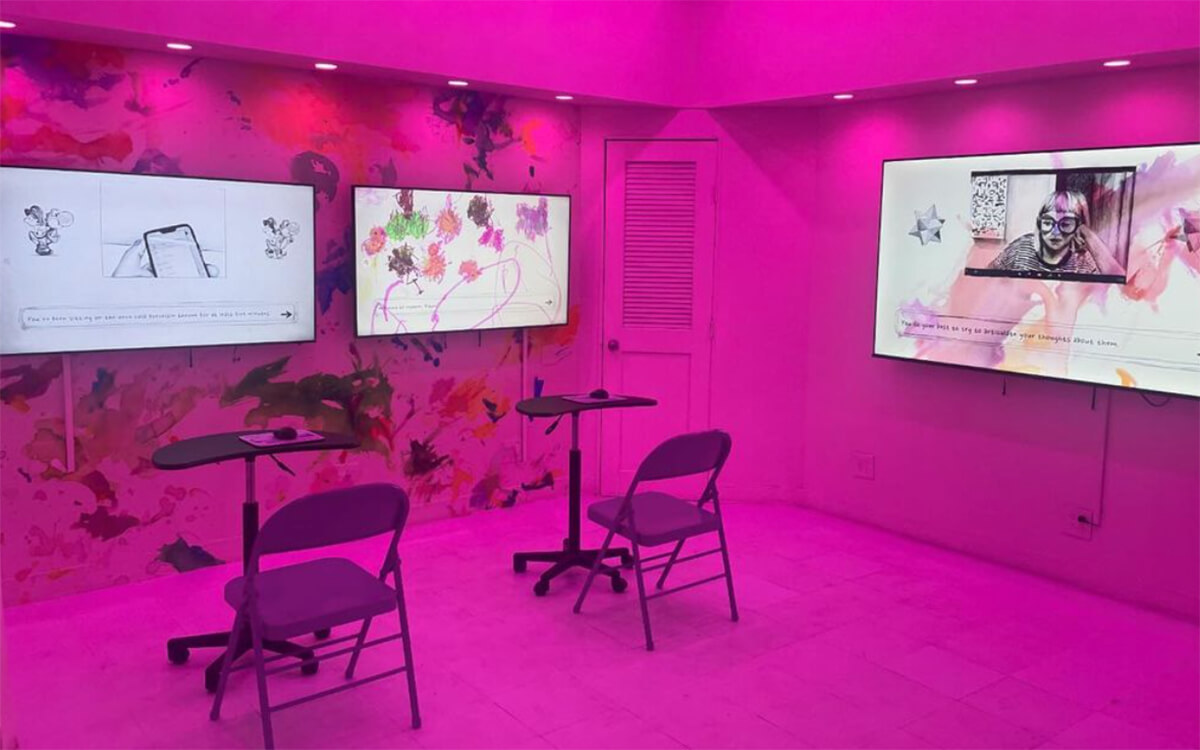
Drawing inspiration from the simplest of pixel aesthetics, Shinji Murakami’s solo exhibition “2600” opens at New York’s NowHere. Down the Atari 2600 rabbithole since 2021, Murakami makes and mods 2600 games; at NowHere the Japanese artist builds bridges between his hobby and his art practice. The show presents recent acrylic paintings rendered in the 8-bit style (image: Pattern (Pizza Boy), 2024), and some are accompanied by a QR code for viewers to scan, and then play Murakami’s retro videogame creations.
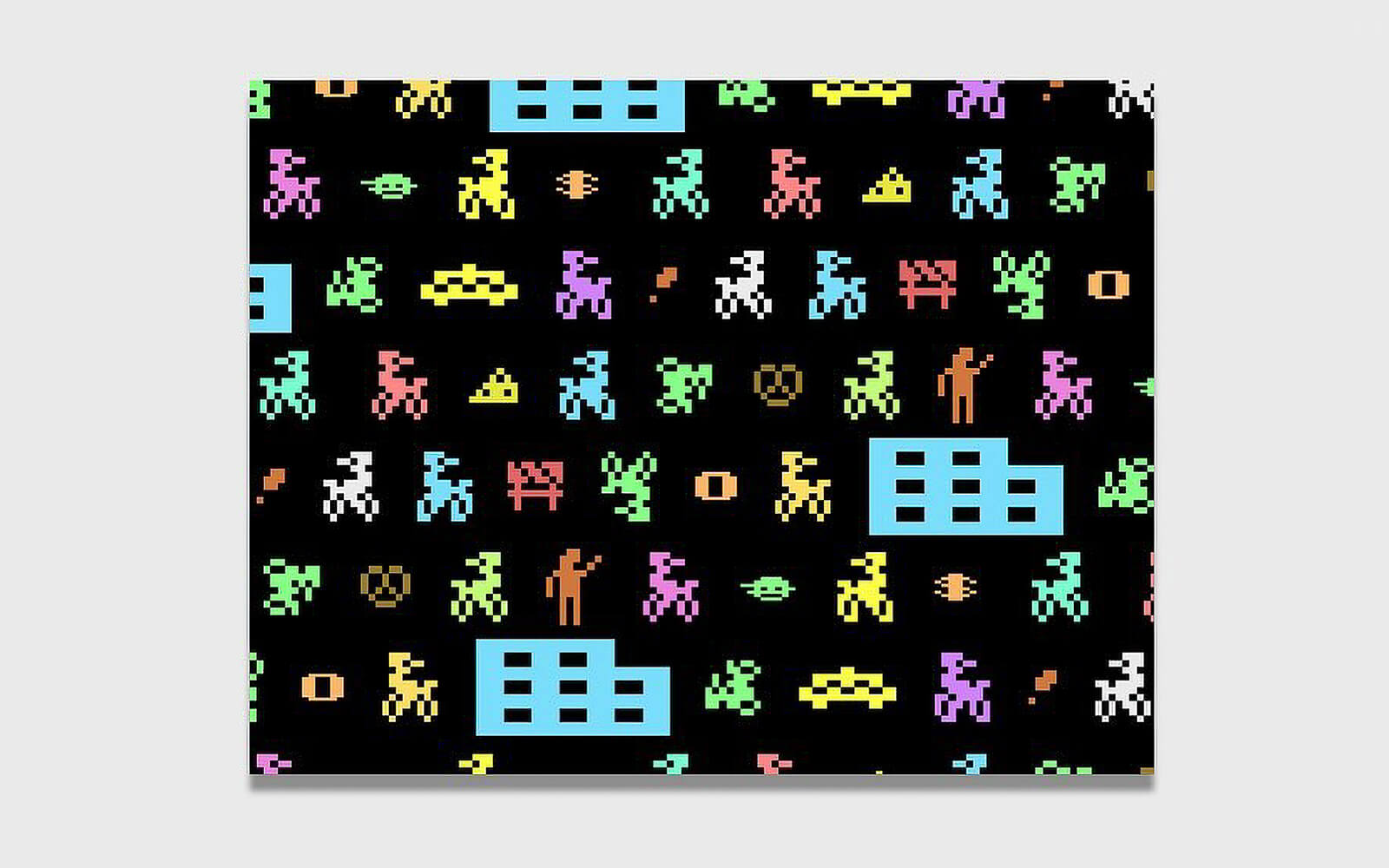
Italian game developer, artist, and educator Paolo Pedercini releases The New York Times Simulator (2024), a fast-paced browser game where players steer the news titan’s fortunes as editor-in-chief. Inspired by Lucas Pope’s 2012 Flash game The Republia Times, Pedercini’s parody game problematizes corporate media and propaganda. The goal: Align front page contents and headlines with powerful interests to “lead the most trusted newspaper through our tumultuous times and into the digital age.”
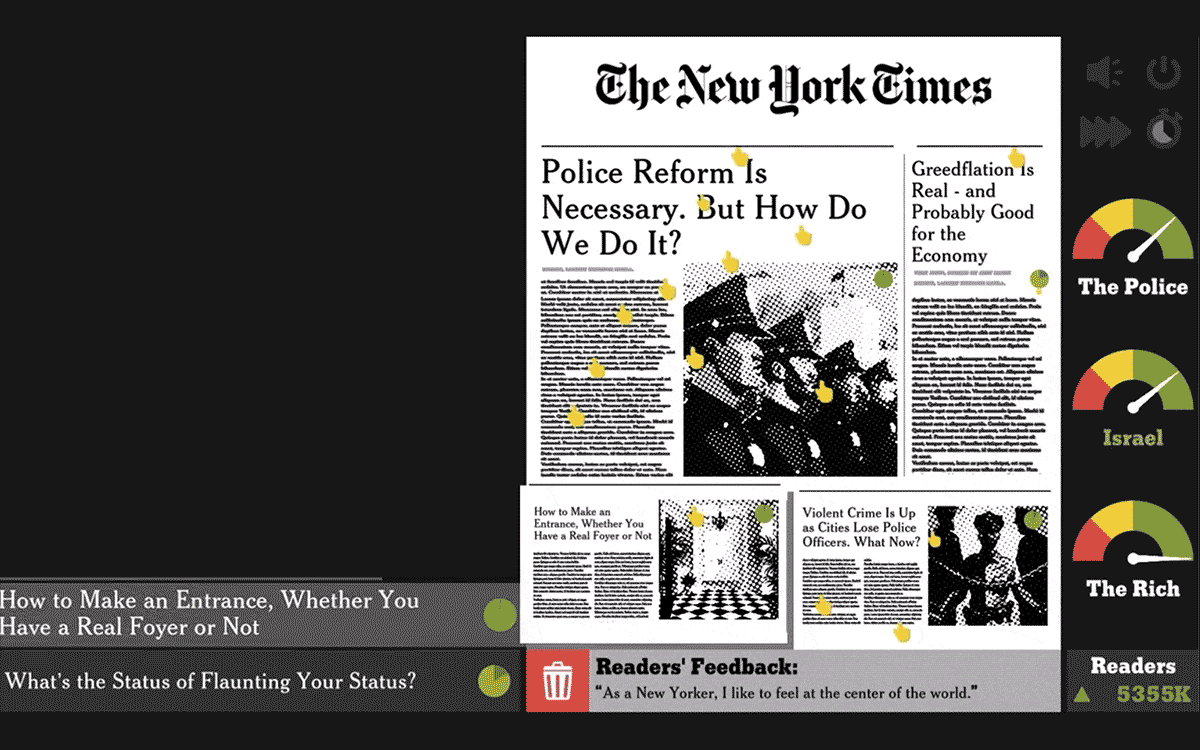
“Now in Digital Art: Game Room” opens at Istanbul’s Akbank Sanat art center, showcasing contemporary game art and art games for visitors to explore and play. Through radical forms of reappropriation, modification, and intervention, videogames become vessels for social commentary, the show’s curators Güven Çatak and Zeynep Arınç write about the works of Eddo Stern, Kristin Lucas, Total Refusal, Petra Szemán, UCLA Game Lab, and We Are Muesli. They’re virtual worlds that ask vexing questions about our own reality.
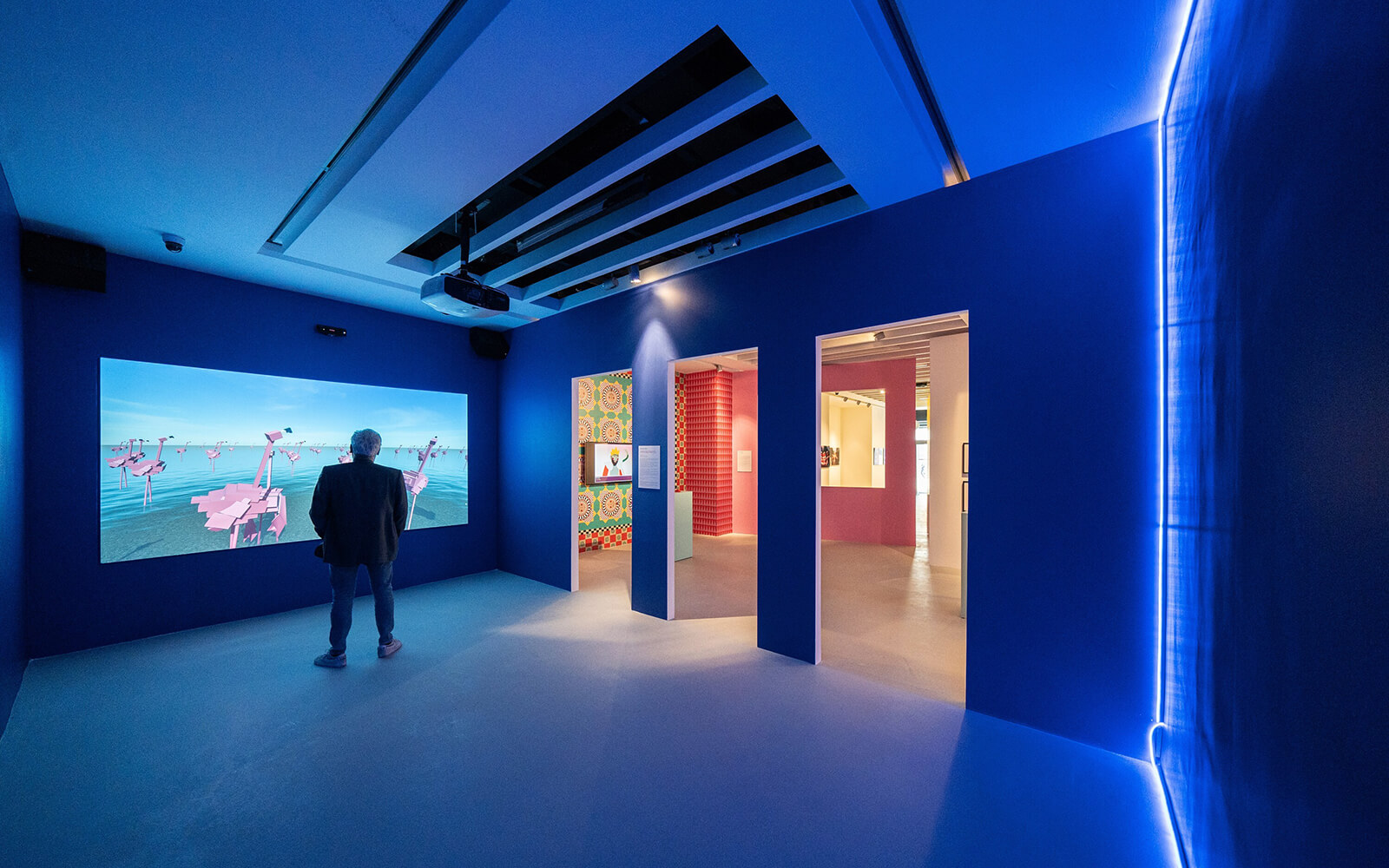
“Everyone wants to play either a fucked-up zombie apocalypse or an elfian, cottage-core fantasy. It’s either utopian, ecological escapism or utter dystopia.”
Mohawk multimedia artist Skawennati’s new machinima, They Sustain Us (2024), premieres at Gray Area, San Francisco, expanding a music video built and filmed in Second Life into an IRL garment collection and runway performance. Two years in the making and Gray Area’s biggest commission to date, the piece reimagines Three Sisters, beloved personifications of Indigenous staple crops (corn, beans, squash) as futuristic superheroes that celebrate food sovereignty, sustainability, and femininity.
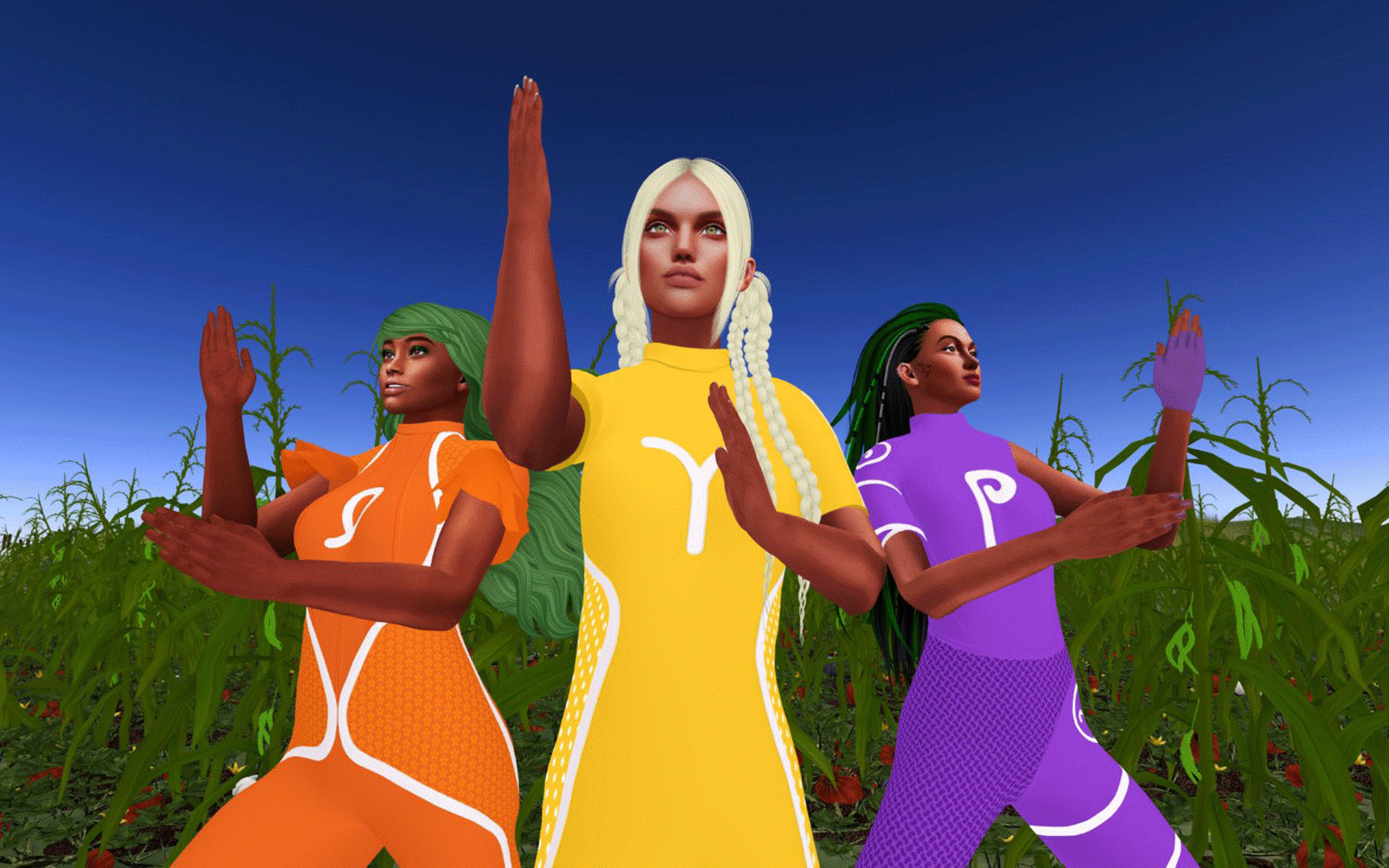
Donning his curator hat, Berlin-based artist Simon Denny turns New York’s Petzel into a “Multi-User Dungeon (MUD)” that connects 1970s table-top RPGs, early BBS networks, modern MMOs, and the metaverse. On view are works by 15 artists including Genevieve Goffman, Jack Goldstein, Josh Kline, Suzanne Treister, and Anicka Yi that “navigate the uncanny skeuomorphism of virtual worlds as they evolve over time and spill over into politics, finance and culture.” Denny’s own solo show, “Dungeon,” explores similar themes in parallel.
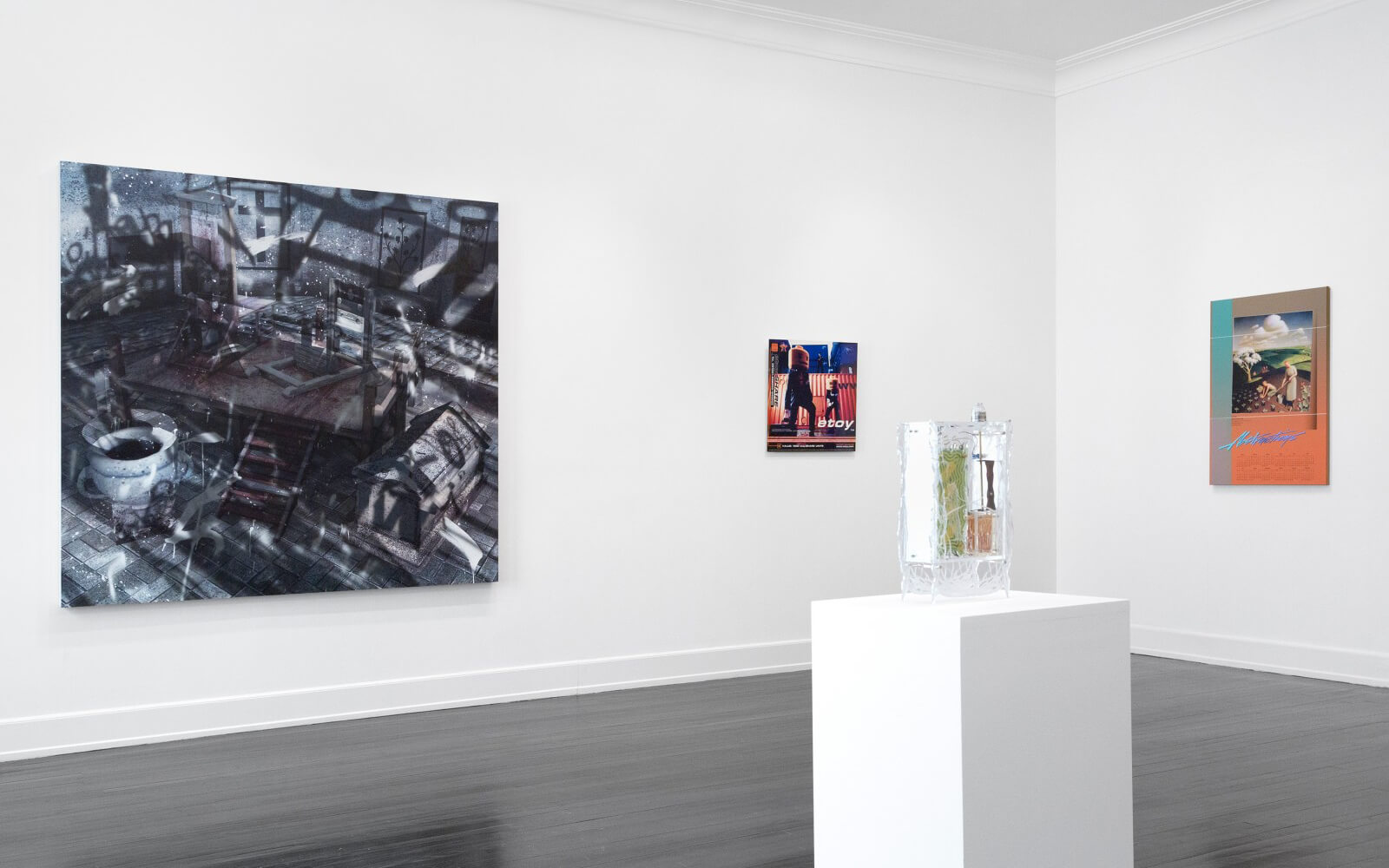
“I wasn’t creating work that was about technology or about the internet or about computers, but about the humans using the computers, myself using computers, my body in front of the computer.”
“TRANSFER Download: Sea Change” opens at Pérez Art Museum Miami (PAMM), flooding a panoramic ‘video chamber’ with reflections “on the accelerating changes across climate, culture, and time.” The 9th iteration of TRANSFER’s travelling immersive format compiles works by LaTurbo Avedon, Leo Castañeda, Fabiola Larios, Cassie McQuater, Lorna Mills, Rick Silva & Nicolas Sassoon (image: Signals 4, 2023), and Rodell Warner into a playlist of “watery warnings,” rendered as generative art, animated GIFs, videogames, and CGI.
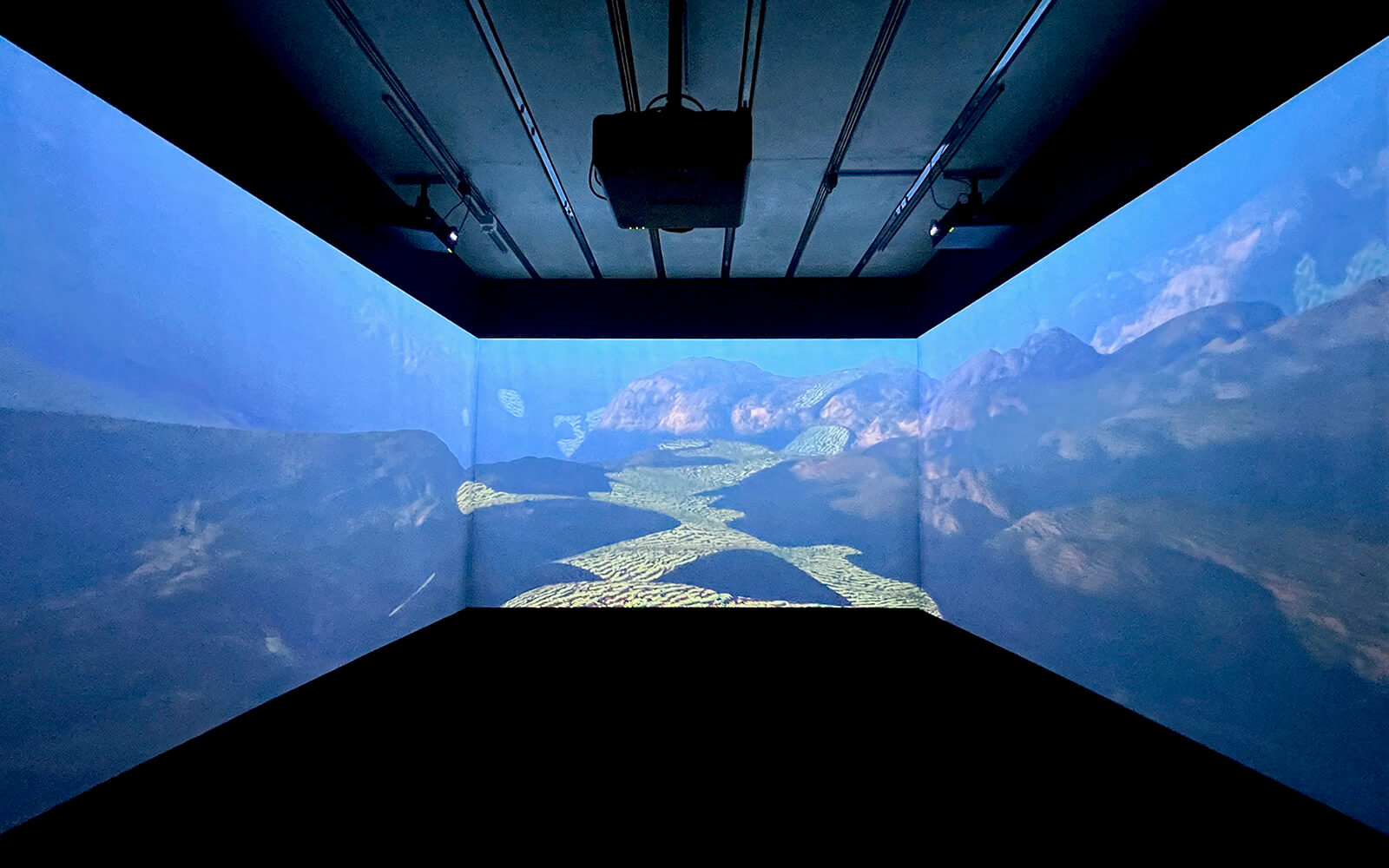
“We want to hijack mass media in order to radicalize people politically. Videogames have an enormous potential to question ideology and they don’t fulfil this potential at all.”
With “My Veins Are the Wires, My Body Is Your Keyboard,” New York’s Museum of the Moving Image (MoMI) opens the first major survey of pioneering net artist and sculptor Auriea Harvey. Featuring more than 40 works spanning early net-based interactives, videogames (created with Michaël Samyn under the Tale of Tales moniker), mixed media and AR sculptures, curator Regina Harsanyi celebrates Harvey’s capacity to “reflect the paradoxical power of computers to enable intimacy” over nearly four decades.
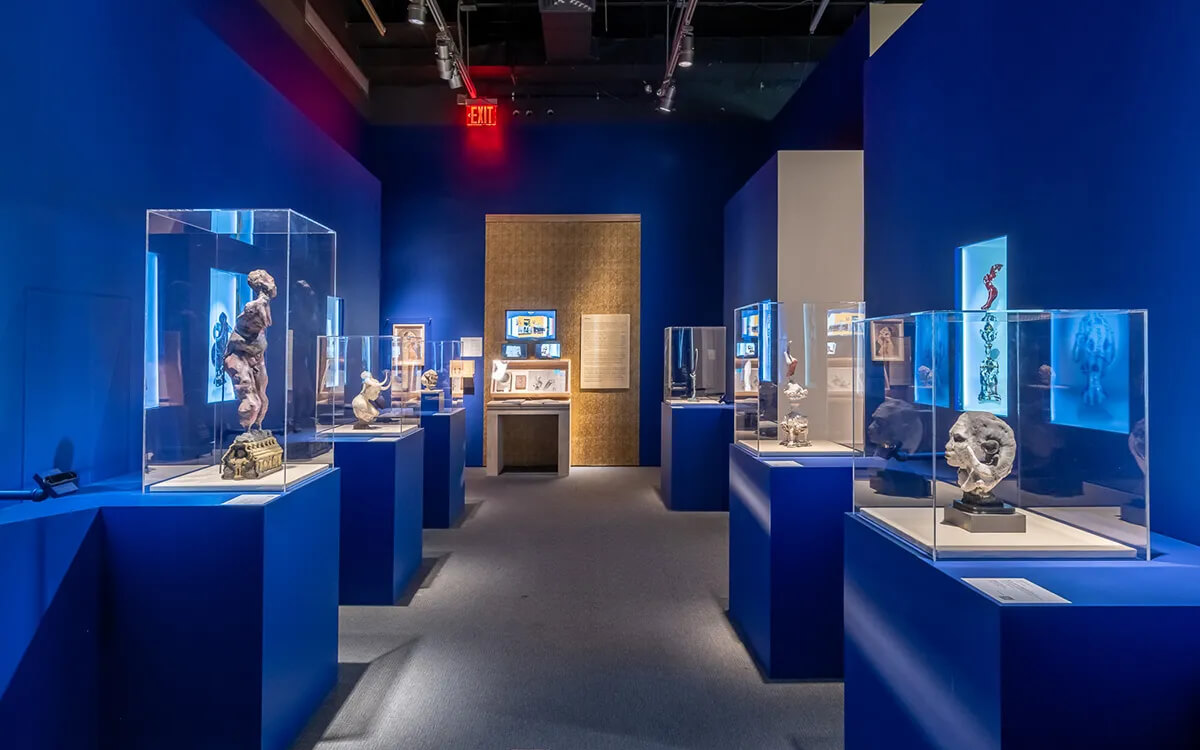
Carola Bonfili’s solo exhibition “Second Order Reality” opens at Aksioma, Ljubljana, exploring states of magical thinking and embodied otherness in virtual worlds. Drawing on the writings of Gustave Flaubert and H.G. Wells as well as videogame metaphors, the Italian artist tells the story of primate protagonist M’ling, The Stone Monkey (2022), across CGI video, an immersive VR experience (entitled Level 1, Illusions That We Should Have, But Don’t), and concrete sculptures.
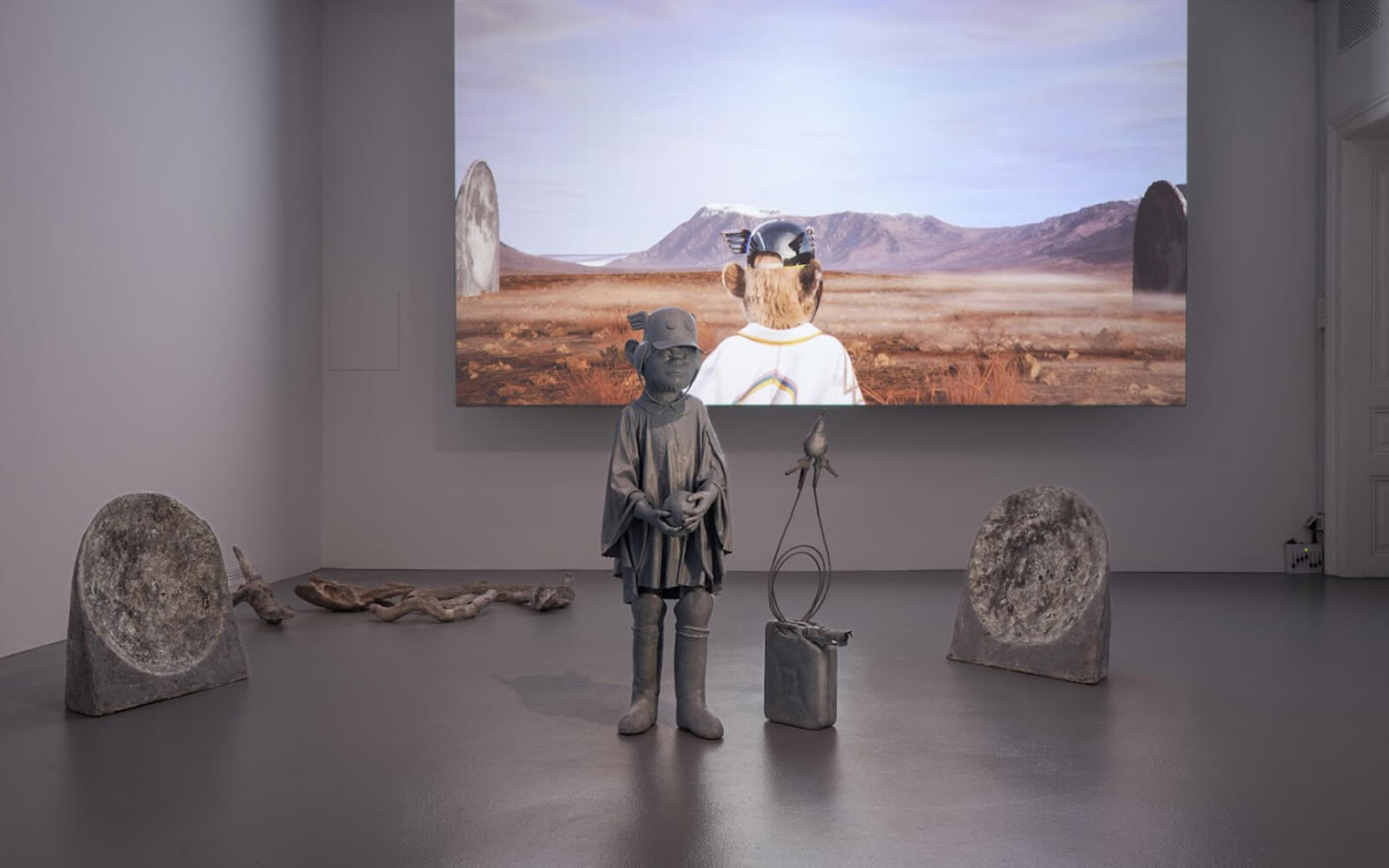
Total Refusal’s solo exhibition “Every Strike Hits Dead Center” opens at Taipei’s Digital Art Center (DAC), presenting new and recent videogame appropriations that explore the representation of labour and leisure. Whereas Club Stahlbad (2022, image), for example, tunes into the frenetic escapism of NPC clubbers in Cyberpunk 2077, the Austrian machinima collective’s new piece, Loop Labor (2023), highlights—and liberates—Latin American field workers in Grand Theft Auto V.
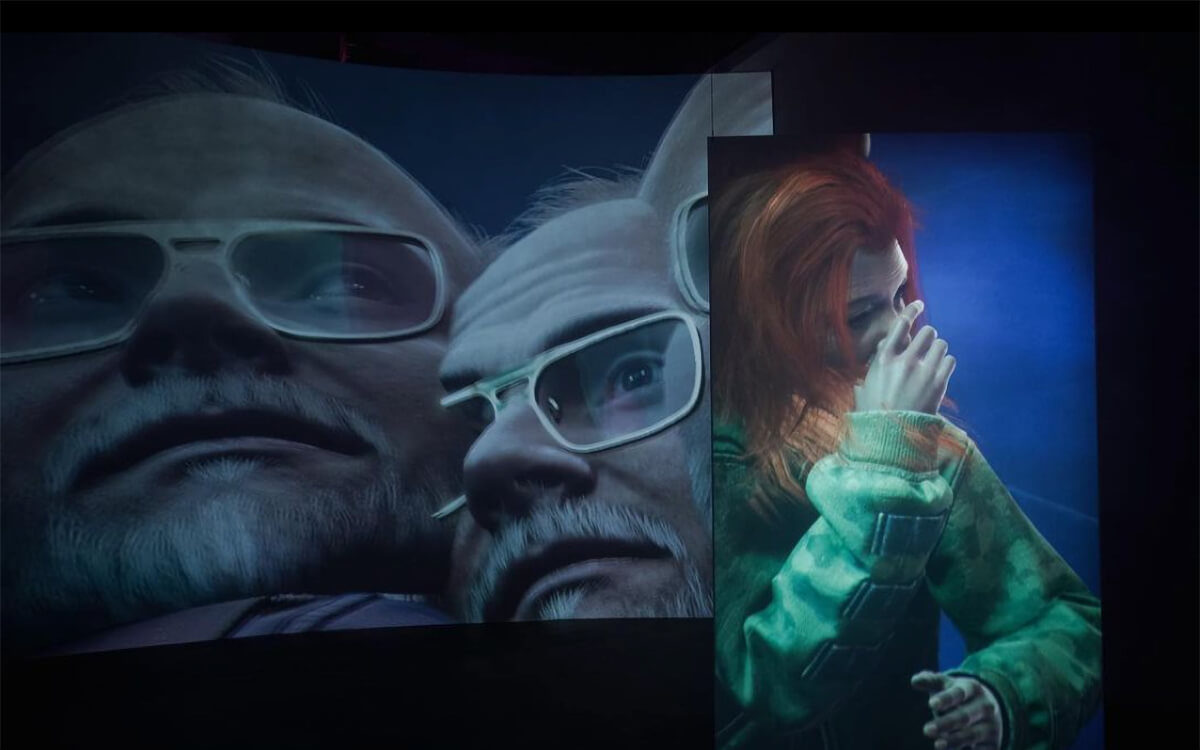
Riffing on how film noir protagonists struggle to make sense of their broken and corrupt worlds, Lawrence Lek’s “NOX” opens in Berlin. The speculative filmmaker’s largest show to date, Lek presents a facility where Farsight Corporation, a fictional AI conglomerate, train and service sentient self-driving cars. Exploring Kranzler Eck’s multilevel layout, visitors consume film, sound, and videogame-based works to piece together an elaborate narrative about a rogue self-driving car and therapy bot.
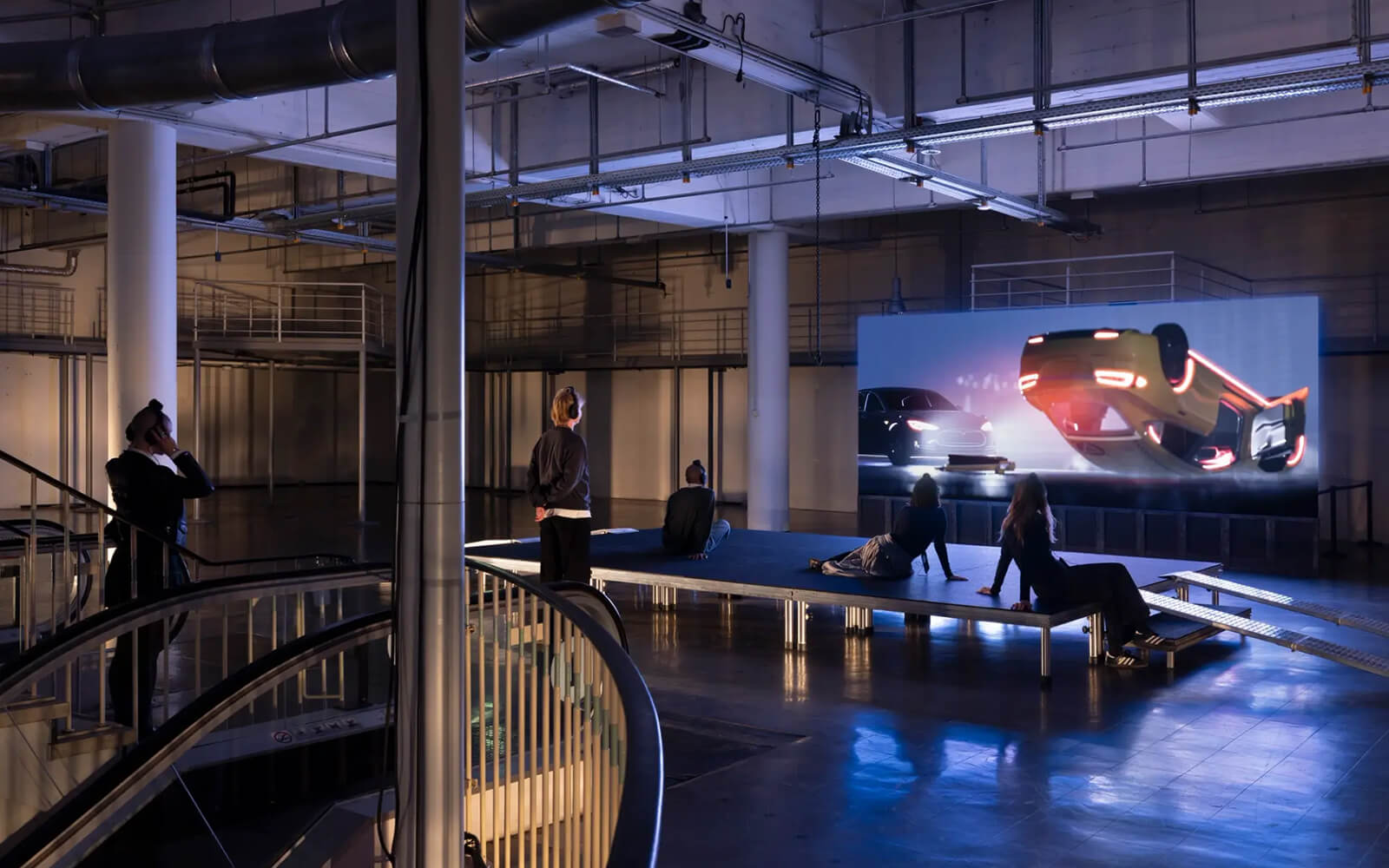
“ABORT, RETRY, FAIL,” Farah Al Qasimi’s first London solo show, opens at the Delfina Foundation. Taking inspiration from Al Qasimi’s 1990s family computer, a major thread in the exhibition is works playfully exploring the “autonomy and disembodiment” of gaming and the early internet. In Anood Playing Sims (2023, image), for example, the UAE-born photographer depicts the self-referential loop of a vibrantly attired young woman with her attention fixed on a CGI desktop—much like her own.
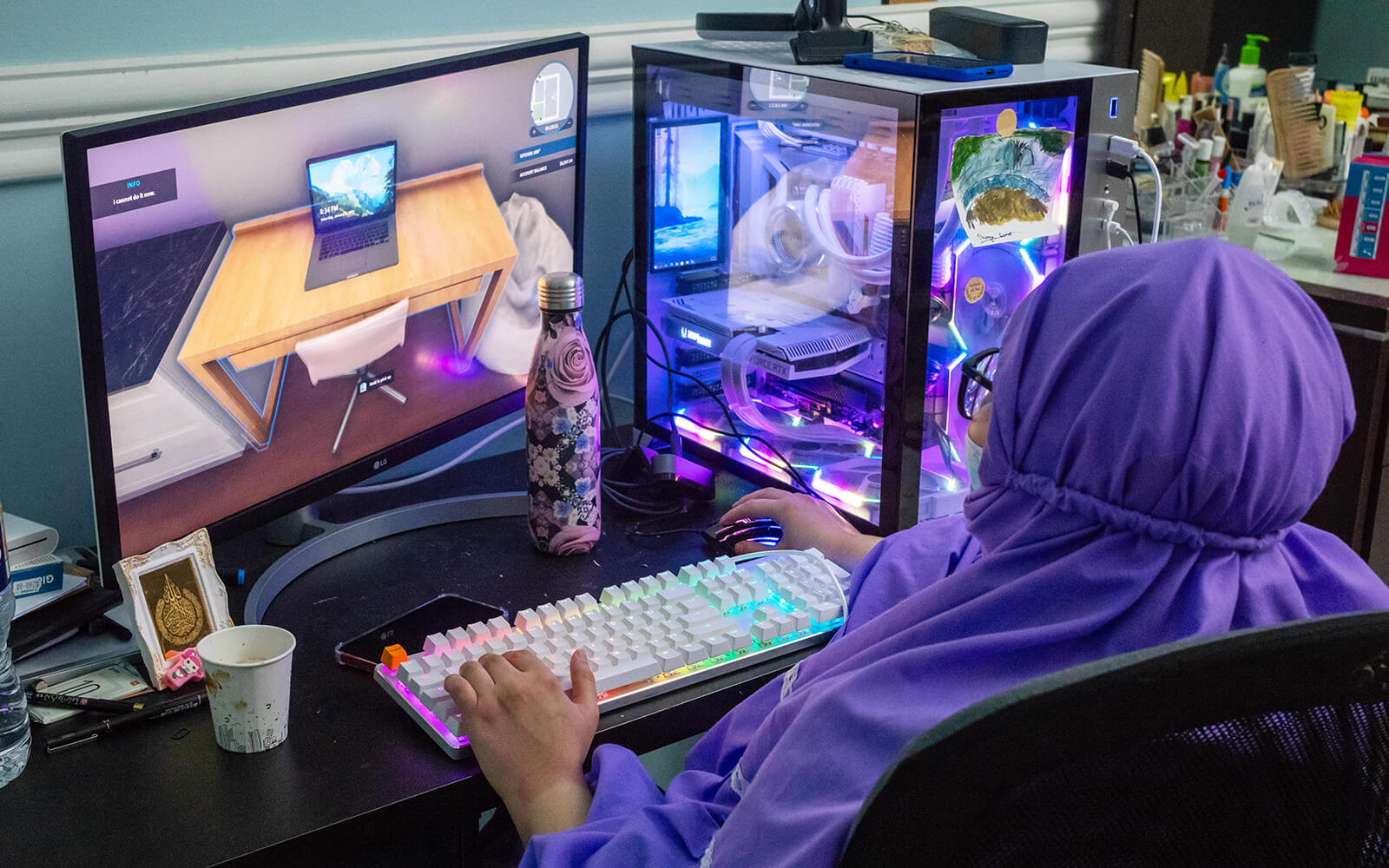
Berlin’s Office Impart opens “Sandbox Mode,” a group exhibition that draws parallels between free-form gameplay and digital art. Impart teamed up with JPG’s María Paula Fernández and curator Stina Gustafsson to bring together new and recent code-based works by Mitchell F. Chan, Stine Deja, Andreas Gysin, Sara Ludy, and others that emerged from radical experimentation. Ludy’s new AI video series Metamimics (2023), for example, conjures crazed carnival scenes from deep within the machine.
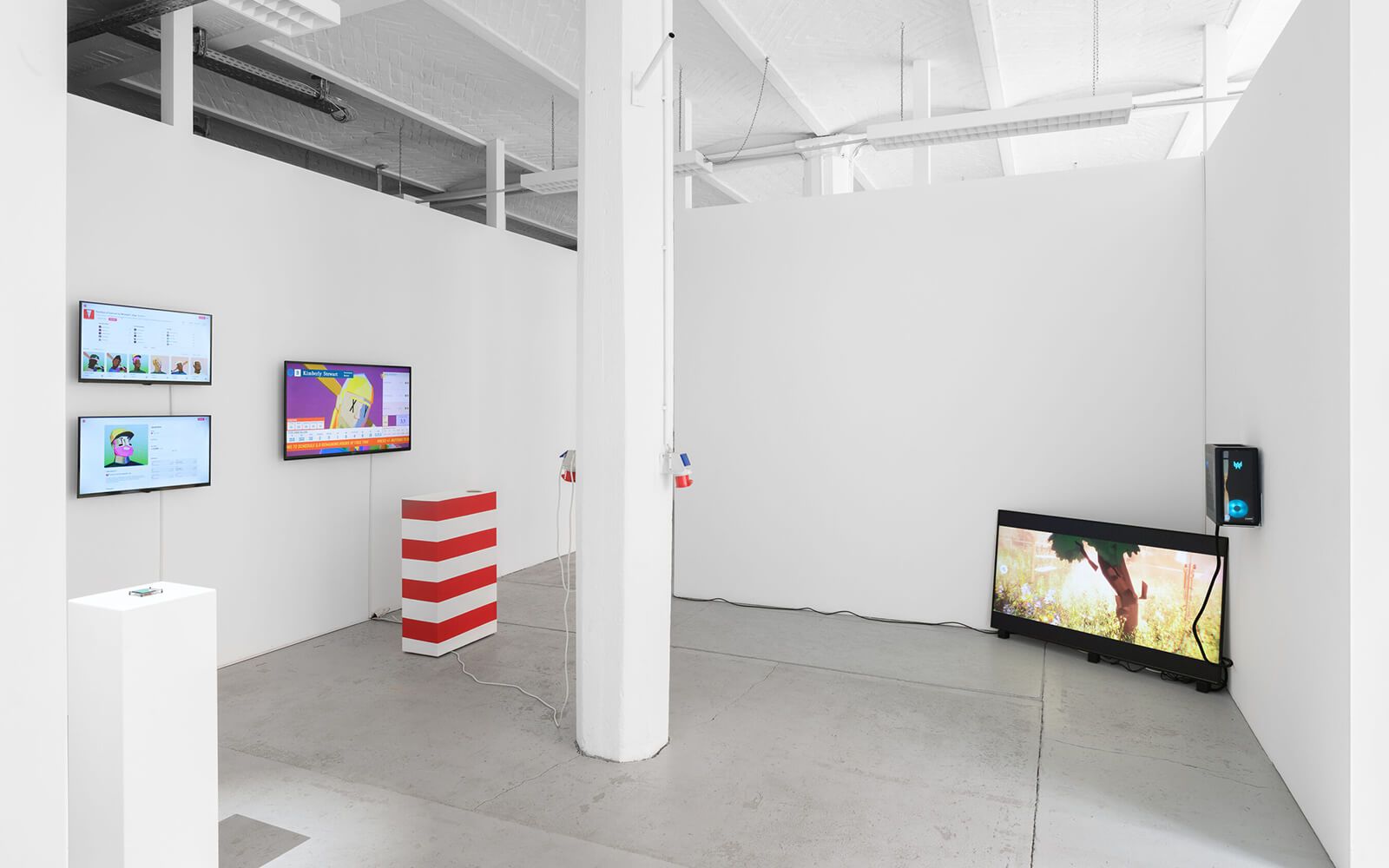
“I want to fight for games, but I also want to have difficult conversations about the oppressive things that are happening inside of these spaces that artists are not seeing because they don’t genuinely participate.”
Total Refusal’s newest videogame exploit Kinderfilm (2023) premieres at Locarno Film Festival (CH) in the prestigious international competition. Set and shot entirely in Rockstar’s action adventure Grand Theft Auto V (2013), the Austrian machinima collective tells the story of Edgar, an NPC, who grapples with existence when he learns of his suspended future. Undoing the safety measures that control his algorithmic reality, Edgar “discovers a beautiful yet nightmarish world” beyond the game.
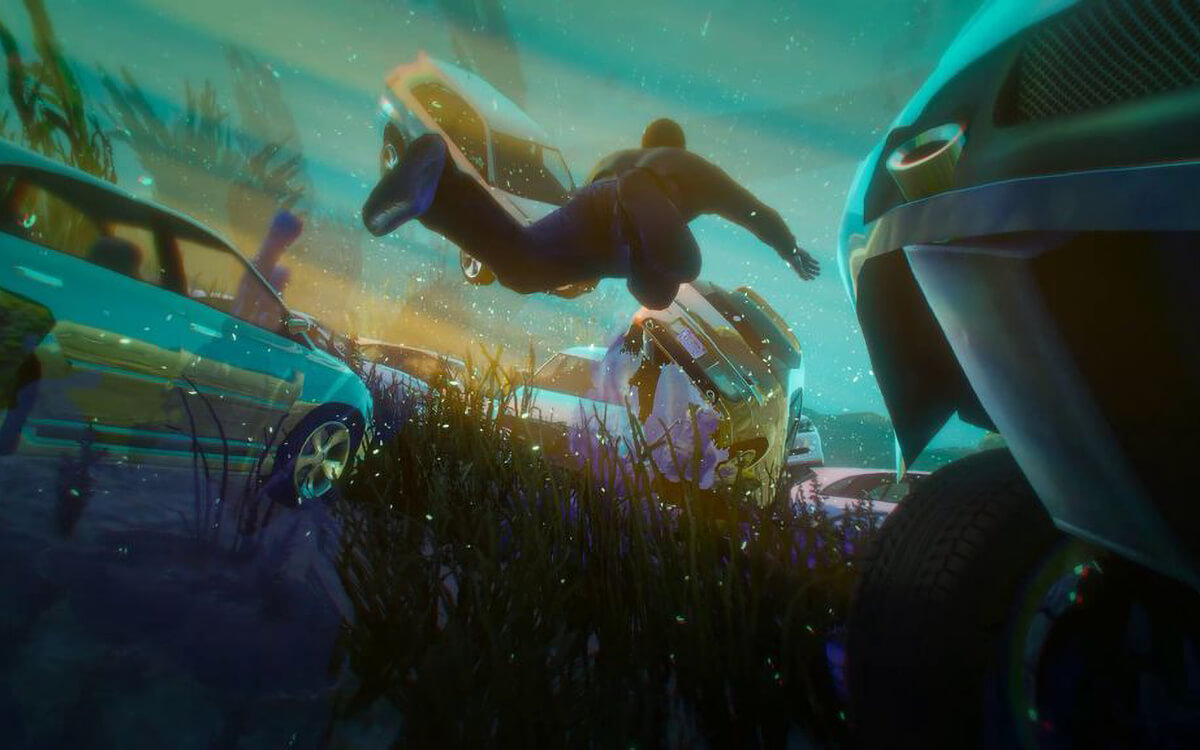
Mischievous game modders 2girls1comp release Every Thing (2023), an experimental Grand Theft Auto V mod that “sequentially spawns every object from the game’s prop database until the program ultimately crashes.” A video showing it in action (image) reveals a small-to-large amassing of furnishings, signs, trees, and infrastructure into a dense illegible volume of CGI pseudo-matter. “It’s a reverse Katamari Damacy. The antithesis of Jenga,” quips machinima and videogame art scholar Matteo Bittanti.
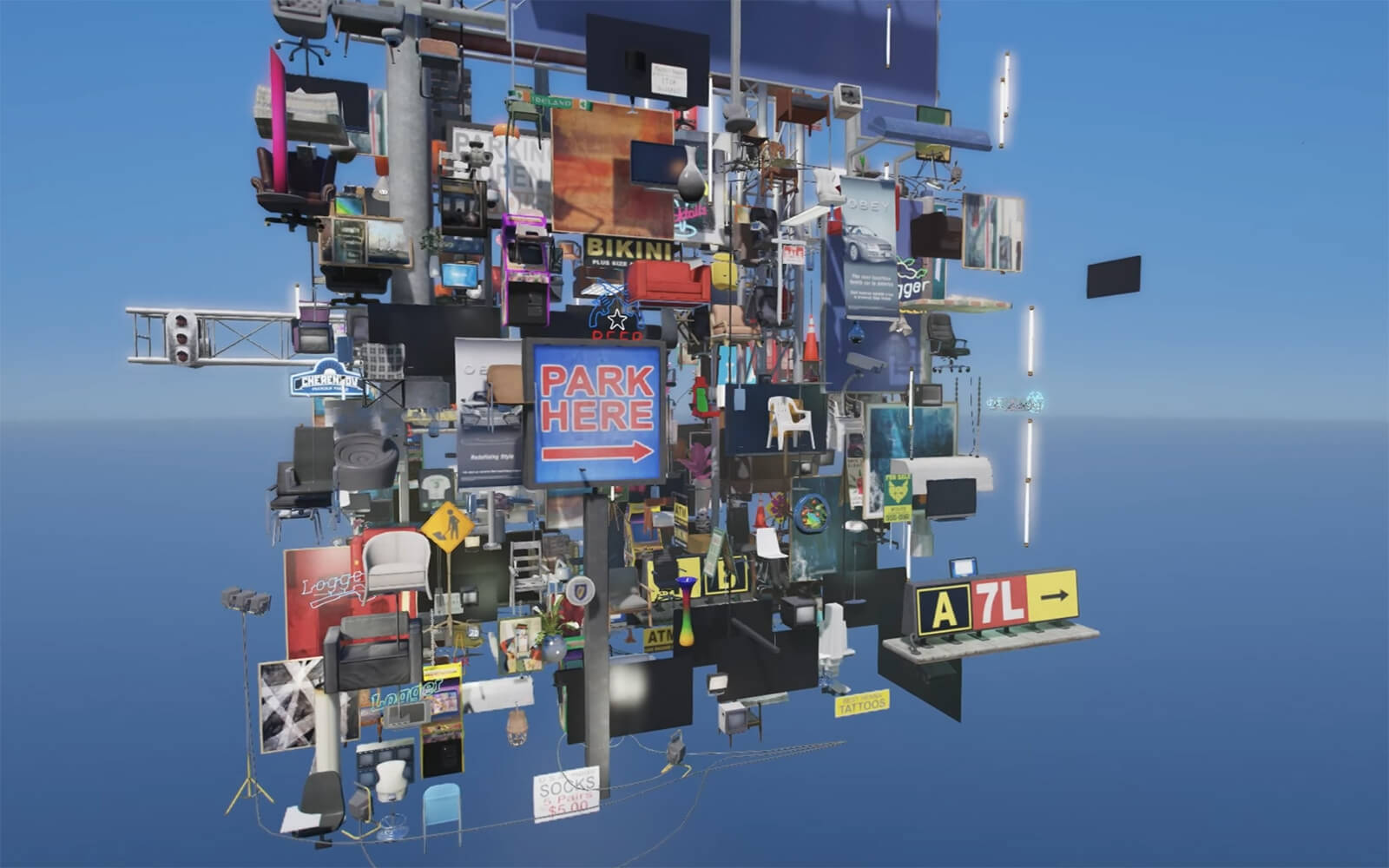
Daily discoveries at the nexus of art, science, technology, and culture: Get full access by becoming a HOLO Reader!
- Perspective: research, long-form analysis, and critical commentary
- Encounters: in-depth artist profiles and studio visits of pioneers and key innovators
- Stream: a timeline and news archive with 1,200+ entries and counting
- Edition: HOLO’s annual collector’s edition that captures the calendar year in print
